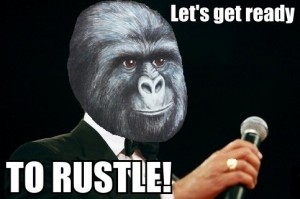
For the past few years I’ve been something of a prophet for the Jefferson deadlift. It’s weird to be specifically known for one odd lift, but I think it’s for good reason. The fact is that I tell people about or show people the Jefferson lift, they try it out, and they find that it fulfills a clear need or lacking in their training. I have dozens and dozens of emails, tweets, and Facebook messages from people who have alleviated back pain or gotten stronger than ever before thanks to introducing the Jefferson.
When it comes to explaining why the Jefferson is so great the biggest reason that it’s useful is exactly that it isn’t a conventional sumo deadlift. Here’s what it’s not:
- Symmetrical – one side of the body takes more load than the other.
- Sagittal-plane dominant – you’re not moving straight up and down or forward and backwards.
- Linear – it’s impossible to perform without some degree of rotation.
As a result it changes everything about the movement and how it applies to the body. Your tissue is stressed in completely different ways and, well, based on results this seems to work incredibly well for people.
But this post isn’t about the Jefferson.
I’ve got a lift I want you to test that is in many ways even stranger than the Jefferson and is sure to rustle even more jimmies.

The lift I want you to test is the Behind the Back Deadlift, or Hack Lift. (Not to be confused with the Hack Squat which generally starts at the top with the bar being lowered to the floor. No, I want you to pick it up off the floor.)
Here’s a good Behind the Back Lift:
And here’s a fucking great lift. This guy is a freak show:
Why though? What is good about this lift?
I derive most of my assessment of the usefulness and validity of lifts not from theoretical biomechanics or from ideology about how things should be but from informed experience. I get to watch people move in the gym every day and observe what works. Better still, through biofeedback testing I am able to observe how people move as well as how their body responds to the stimulus. Here’s what I’ve found about the Behind the Back Deadlift:
When people come in who have been doing a lot of saggital-plane, symmetrical, linear movements (conventional deadlifts, sumo deadlifts, cleans, snatches) often times more of this type of movement won’t test well. Sometimes even Jefferson doesn’t test well.
But Behind the Back Deadlift does.
Often enough that I’m almost guaranteed to look like a genius when nothing seems to be testing well and I can with a wave of the hand offer BTBDL and it tests well.
I can’t prove it, but my hunch is that this weird looking deadlift tests so well because it’s the exact opposite of the movements people are doing so much of. Whereas in nearly every deadlift the load is anteriorally biased, the Behind the Back Deadlift is posteriorally loaded with the weight well behind the heels.
It’s an opposition movement – something that almost invariably tests well when you’ve gone too far in one direction.
Here’s how to do it, directly from Off The Floor:

If you watch videos of heavy BTBDLs you will notice an odd pattern to the movement where the knees have to come forward about mid-lift. This is normal and to be expected. You’re not doing it wrong because that’s happening.
One note about a variation that is useful for restoring extension function as well as rotation: Use only one weight, such as a kettlbell, in one hand. This allows the body to make up for some of the lack of extension with some rotation, and it tests really well for people.
Ultimately you may not need or want to pursue insane levels of strength in this lift and that’s fine. BUT, having it in the back of your mind to test when other things aren’t working well or when you feel like you want an alternative just gives you one more direction to make progress in.
P.S. Off The Floor is on sale for HALF OFF this week only until Friday at midnight. It has been upgraded and expanded since the original release! If you’re serious about putting pounds on your deadlift, you owe it to yourself to take advantage of this opportunity!


That’s nuts. Is there any deadlift you haven’t done?